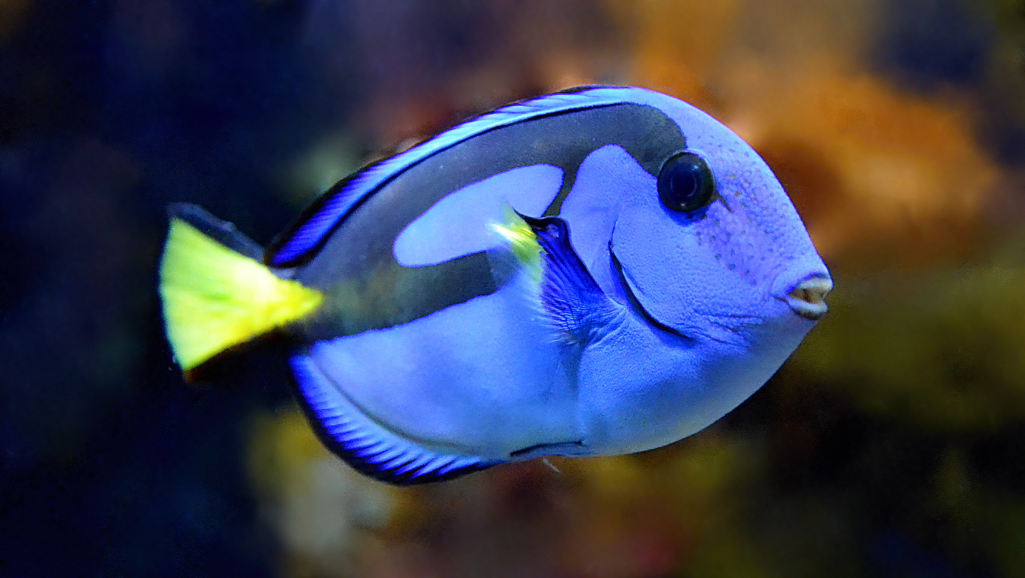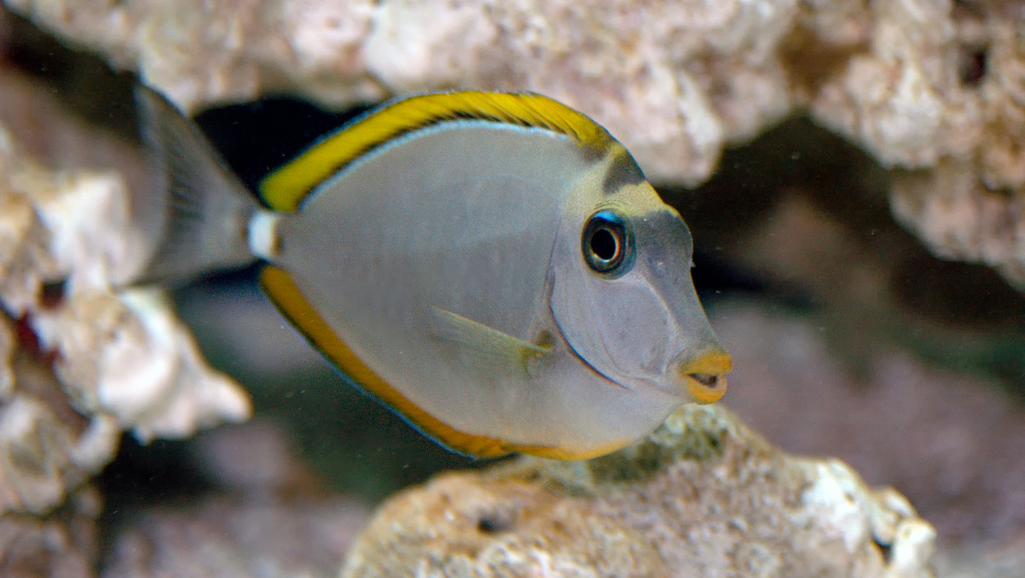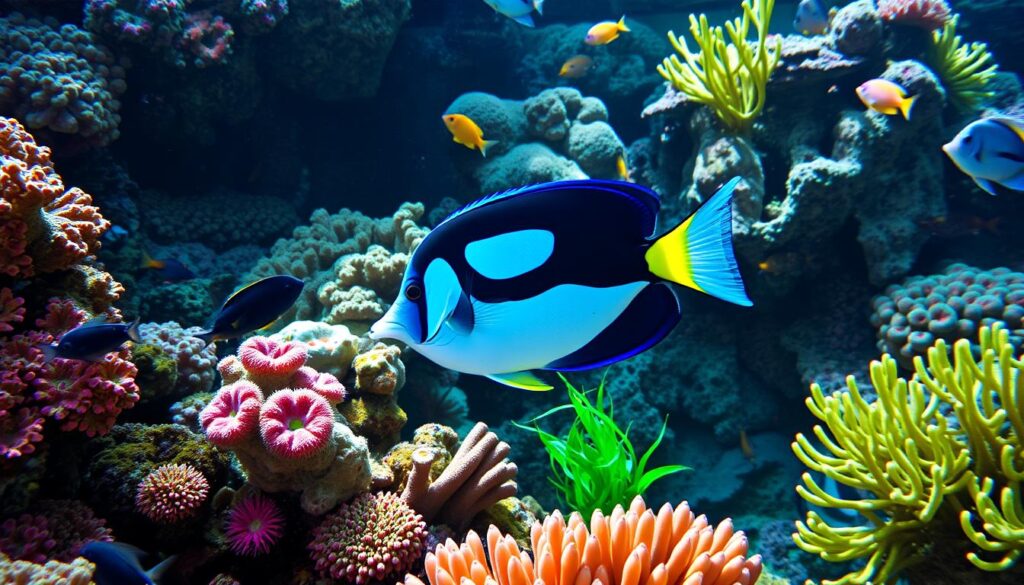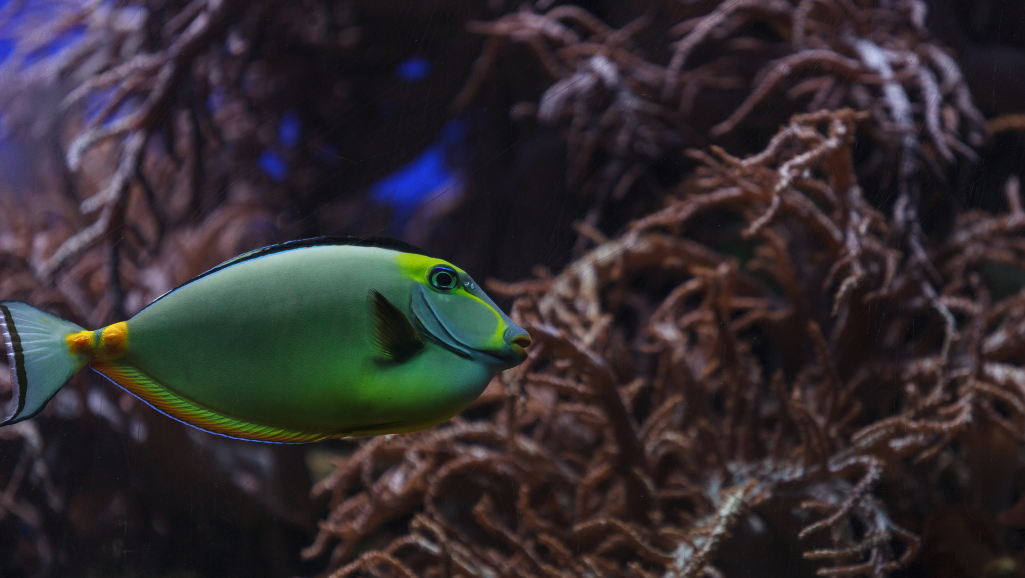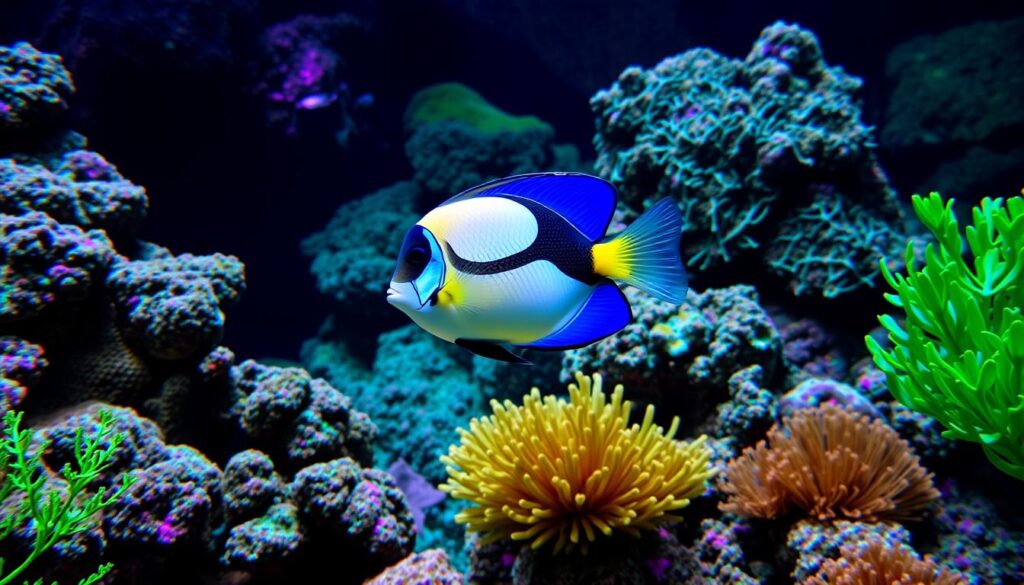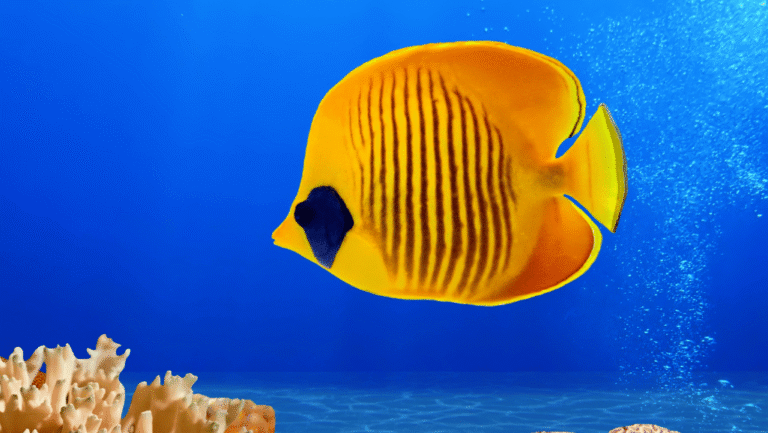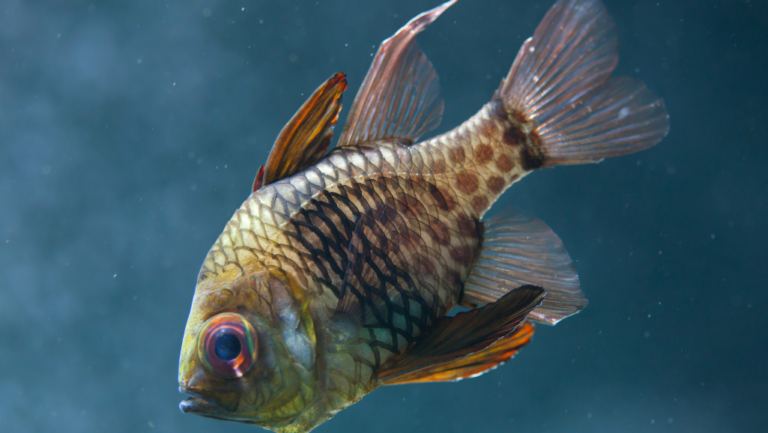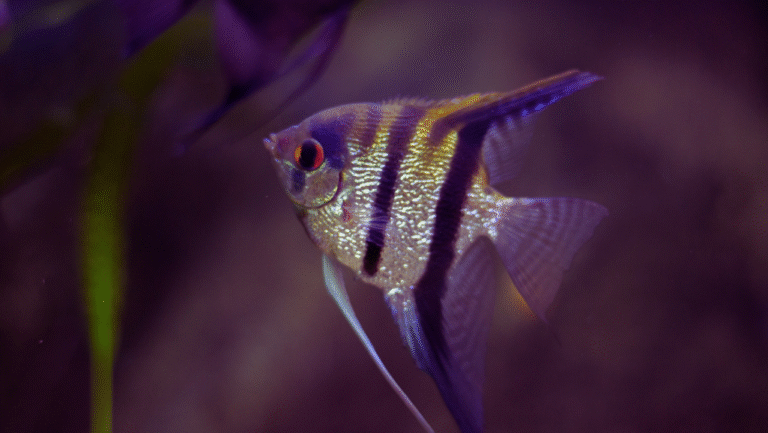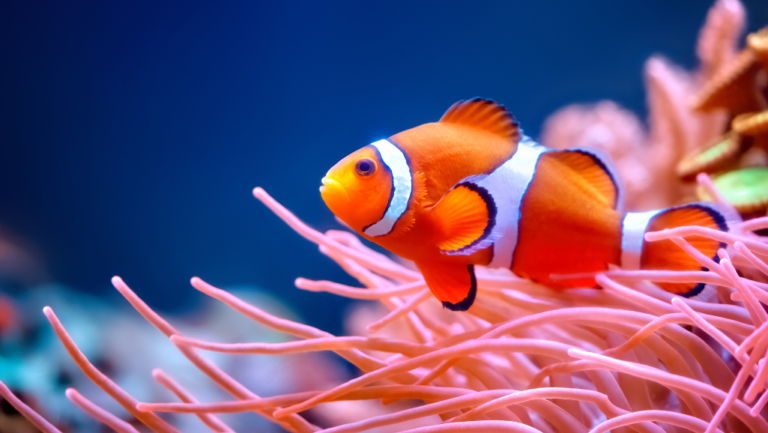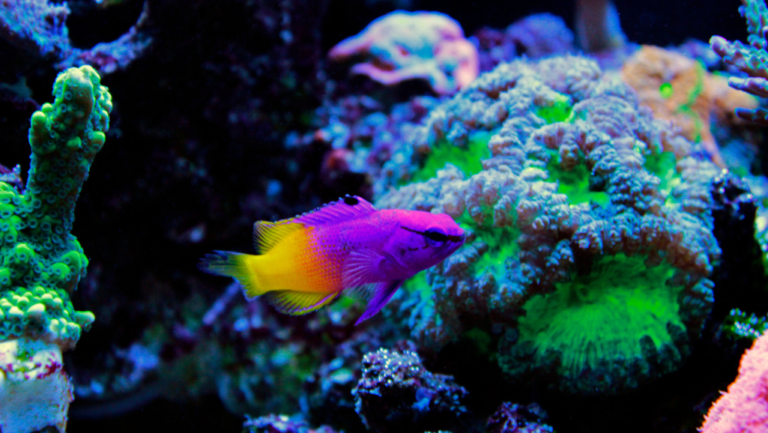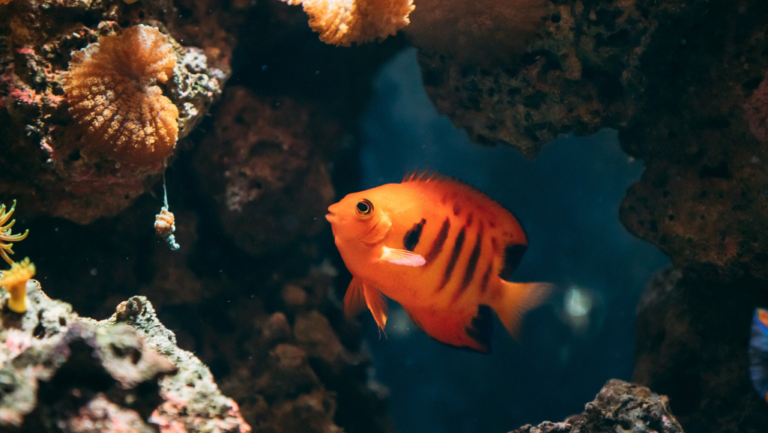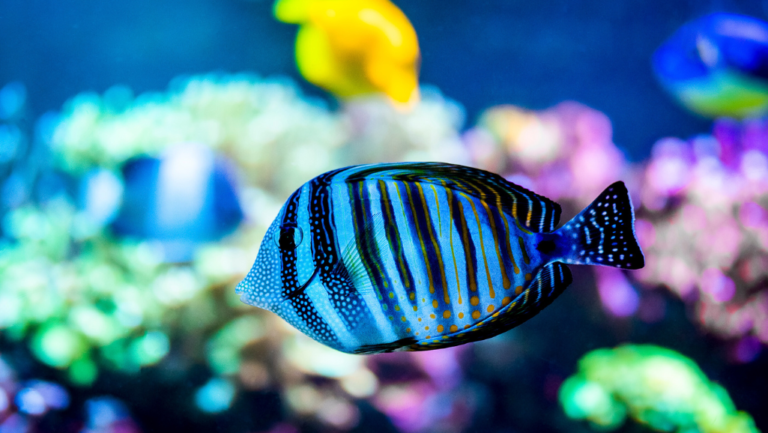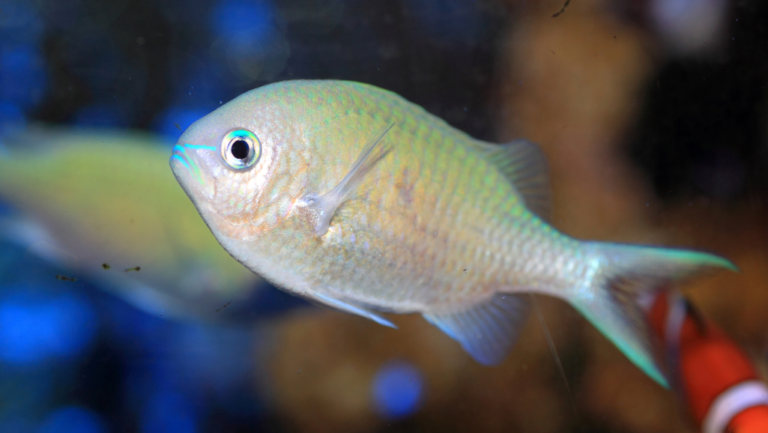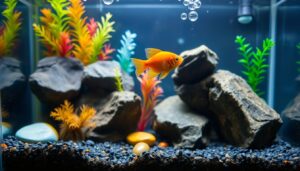Creating a home for the Naso Tang in your aquarium is a rewarding task. It requires understanding their needs for a happy life. These tangs can grow up to 18 inches long and live up to 30 years in the wild. With proper care, they can live over a decade in your aquarium.
To keep your Naso Tang healthy, you need a big tank. A 200-gallon tank is recommended for their swimming space. They prefer water with a specific gravity of 1.020-1.025 and a temperature between 72°F and 78°F. Keeping the water clean is key to their health, with regular water changes.
Algae is a big part of their diet, which they find by foraging. They need up to 2 sheets of nori algae per day. Their diet should also include marine pellets and vitamin-rich treats like brine or mysis shrimp. Adding live rock and sand substrate to their tank is important for their mental health.
Key Takeaways
- Provide a tank of minimum 180 gallons for adult Naso Tangs to simulate oceanic expanses.
- Regular maintenance with 10-20% weekly water changes is critical for clean living conditions.
- Ensure a diet rich in algae and supplemented with varied marine-specific nutrients.
- Maintain water parameters with salinity at 1.023-1.025 and temperatures between 75°F and 82°F.
- Be vigilant of diseases by setting up a quarantine system to safeguard against marine velvet and ick.
- Adapt feedings to 2-3 times daily to mirror natural grazing habits.
- Facilitate natural foraging and shelter with an arrangement of live rock and sand substrate.
Overview of Naso Tang
The Naso Tang, also known as the Lipstick Tang or Orangespine Unicornfish, is a favorite among aquarists. It’s known for its unique body shape and lively behavior. This species is a striking addition to large marine aquariums, but it’s also quite challenging to care for.
Naso Tangs can grow up to 18 inches, so they need a lot of space. They require a tank of at least 180 gallons. This is because they like to swim long distances in the wild, just like other big marine species.
Species Characteristics
The Naso Tang is known for its bright colors and horn-like forehead. These features are not just for show. They help the fish attract mates and defend against predators in the wild.
Natural Habitat
In the wild, Naso Tangs live in the Indo-Pacific waters. They love the coral-rich reefs of the Red Sea and the Great Barrier Reef. The water is salty and warm, perfect for them to thrive.
Common Variants
There are different types of Naso Tangs, like the Blonde Naso Tang. It has a less noticeable horn and softer colors. These variants live in similar places but look very different.
Learning about Naso Tangs is more than just admiring their looks. You need to know about their natural home and how they behave. This knowledge helps keep them happy and healthy in your aquarium.
Essential Tank Requirements
Creating a perfect home for a Naso Tang requires careful thought. You need to consider tank size, water conditions, and filtration. These are key to mimic their natural ocean home and keep them healthy and happy.
Minimum Tank Size
The right Naso Tang tank size starts at 180 gallons for adults. This size allows for their active swimming and growth up to 18 inches. It’s also important for their well-being and to reduce stress. A wider tank is best to meet their need for lots of horizontal swimming space.
Water Parameters
To keep the optimal water conditions for Naso Tang, regular water quality checks are a must. The ideal pH is between 8.1 and 8.4, salinity from 1.020 to 1.025, and temperatures between 74-78°F. Sticking to these helps avoid diseases like Ich and HLLE, keeping your Naso Tang healthy.
Filtration and Aeration
Good filtration and aeration systems are essential in any Naso Tang aquarium setup. They mimic the natural currents of their ocean home and keep the water quality high. This is vital for the Naso Tang’s health. Investing in strong filtration is key to handle their bioload and keep the water clean.
Diet and Feeding Habits
Knowing what your Naso Tang eats is key to their health. They need a diet that matches their natural habits. Here’s how to feed your Naso Tang right.
Recommended Foods
Naso Tangs love to eat marine algae and seaweed. These foods give them the nutrients they need. Here are some nutritious foods for Naso Tang that are good for them:
- Marine algae sheets – Rich in essential vitamins and minerals
- Dried seaweed (Nori) – Easily digestible and high in dietary fiber
- Marine pellets – Formulated to provide a balanced diet with trace elements
- Frozen mysis shrimp – To supplement with proteins periodically
Feeding Schedule
Feeding your Naso Tang regularly is important. To keep them healthy, follow this feeding plan:
- Feed twice daily – Morning and evening
- Portion sizes that the tang can consume within several minutes
- Monitor the tang’s appetite to adjust food amounts and variety as needed
Changing up their food can help them get all the nutrients they need. Try giving them different foods each day.
Foods to Avoid
Some foods are bad for Naso Tangs because of their sensitive stomachs. Here are a few to avoid:
- High-fat foods – Can lead to obesity and liver issues
- Terrestrial based proteins – Hard for tangs to digest and may cause nutrient imbalances
- Unsoaked dry foods – May lead to digestive blockages if not properly soaked beforehand
Following these feeding tips can help your Naso Tang stay healthy and happy. Make sure to give them the right foods and avoid the wrong ones.
Behavior and Compatibility
The Naso Tang, known as Naso lituratus, is a fascinating fish with special needs in a marine tank. It’s important to know how it behaves and gets along with other fish for a peaceful tank.
Social Interactions
Naso Tangs are generally calm and can brighten up a big reef tank. They can grow up to 18 inches, so they need lots of room to swim. These fish are social and can form hierarchies with other fish, as long as there’s enough space.
Tank Mates to Consider
Choosing the right tank mates is key for Naso Tang compatibility. Look for fish that don’t fight over space or food. Good Naso Tang tank mates include calm fish like Clownfish and Hippo Tangs. Introduce all fish at once to avoid fights and keep the tank balanced.
Signs of Stress
It’s important to spot stress in Naso Tangs to keep them healthy. Stress signs include color changes, being less active, not eating, or swimming oddly. These signs can mean health issues or tank problems. Watching your fish closely and fixing any problems quickly can help them stay happy and healthy.
For more tips on creating a balanced marine tank, check out this aquarium care guide.
Maintenance and Care
Keeping a Naso Tang healthy means knowing the basics of Naso Tang maintenance. This includes regular water changes and watching their health closely. It’s important to act fast because they can get sick easily. This part will show you how to keep your Naso Tang healthy and happy.
Regular Water Changes
Keeping the water top-notch for your Naso Tang is key. They make a lot of waste, so they need a big tank. A tank of at least 150 gallons is best. Changing 15-20% of the water each week helps keep the water clean and healthy.
They like water between 75-79°F and a specific gravity of 1.021-1.024. This helps them stay healthy.
Monitoring Health
- Daily checks for signs of distress or illness such as lethargy or color loss
- Immediate isolation and treatment in a quarantine tank if symptoms of illness like ich or marine velvet are detected
- Ensuring dietary needs are met with a well-rounded diet including dried seaweed, marine algae, and Spirulina
Watching your Naso Tang’s behavior and looks is important. It tells you if they’re feeling okay or if there’s a problem.
Common Diseases
To stop diseases, quarantine new fish well and keep the water clean. Naso tangs can get sick, like ich. But, you can fight it by managing the tank and keeping the water quality good.
“The key to disease prevention in Naso Tangs lies in the meticulous attention to their environment and dietary needs.”
To keep your Naso Tang disease-free, make their environment stable and stress-free. Keep the tank conditions up to date with the latest marine care tips. This helps them live a long and healthy life.
Aquascaping for Naso Tang
Creating a Naso Tang habitat is more than just water and plants. It’s about beauty and function for a healthy home. This guide will help you with Naso Tang aquascaping, picking the right plants, and setting up the best spaces for them.
Recommended Decorations
Start with live rock and coral to mimic a natural reef. They provide hiding spots that are good for the Naso Tang. Also, add substrates and big rocks to encourage foraging and better health. Make sure decorations are smooth to avoid harming the fish.
Plant Choices
- Sea Veggies
- Seaweed Salad
- Ocean Nutrition
Picking the right plants is key in Naso Tang aquascaping. Seaweed and algae keep the balance and feed the Tang. These suitable plants for Naso Tang also make the tank look good.
To learn more about setting up a Tang-friendly tank, visit here.
Creating Hiding Spots
Designing a Naso Tang habitat means creating hiding spots like rocky crevices. Live rock structures that form caves and tunnels help them feel safe. This reduces stress and boosts their health and activity.
Every detail of Naso Tang aquascaping should aim to replicate their natural home. This approach not only keeps the Naso Tang healthy but also makes your tank a beautiful underwater world. It meets both the beauty and biological needs of your marine friends.
Conclusion and Final Thoughts
As we conclude our guide on Naso Tang keeping, it’s key to remember the important steps for their health. Understanding their needs and managing their tank well are critical. These marine creatures can live up to 15-20 years with proper care.
Recap of Essential Care Tips
Aquarists need to ensure their tanks are at least 190 gallons for the Naso Tangs to roam. Keeping the water’s pH at 8.3 and temperature at 80°F is also vital. They need a varied diet, including marine algae, Mysid shrimp, and Spirulina flake.
Signs of trouble include less activity and color changes. These can mean they’re not getting enough food or the water isn’t right.
Long-term Commitment
Keeping Naso Tangs is a big commitment. It means watching their health closely and treating any illness quickly. Look out for heavy breathing and loss of appetite.
They can get sick, so having a quarantine tank is a good idea. Watching them change colors and seeing their calm beauty makes the effort worth it.
Resources for Further Learning
There are many resources for learning more about Naso Tangs. You can find books on their behavior, their role in the reef, and how to treat illnesses. This knowledge helps you care for them better.
With all the information out there, you can face any challenge. From diagnosing health problems to adjusting their environment, you can make sure your Naso Tangs live long, happy lives.
